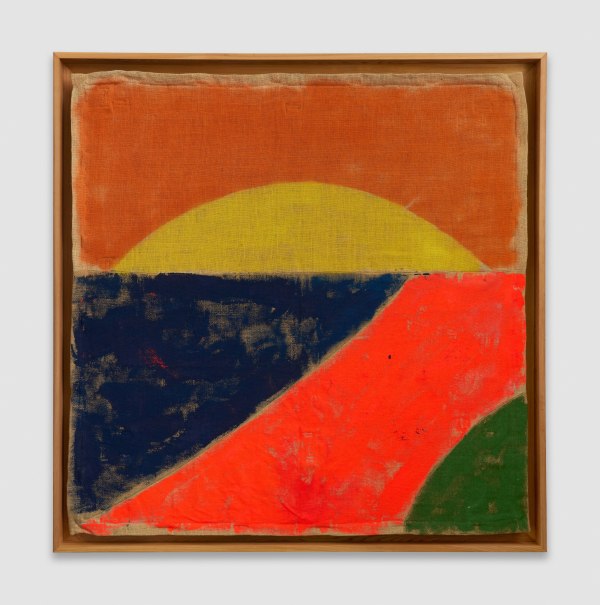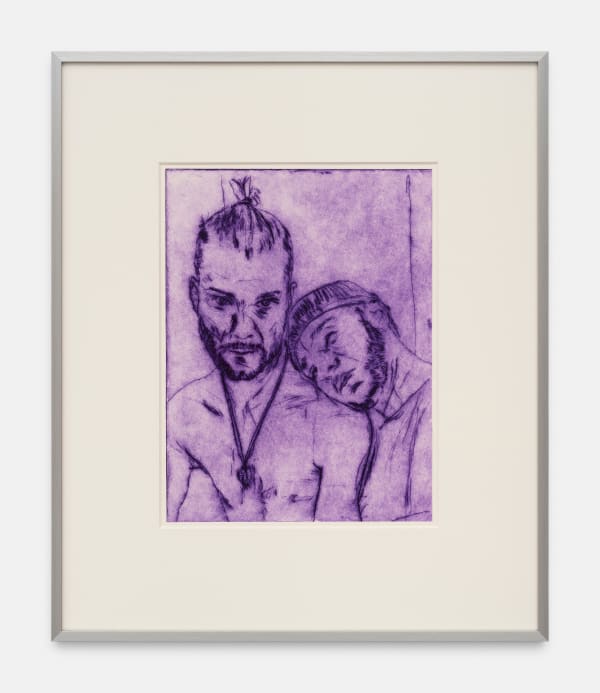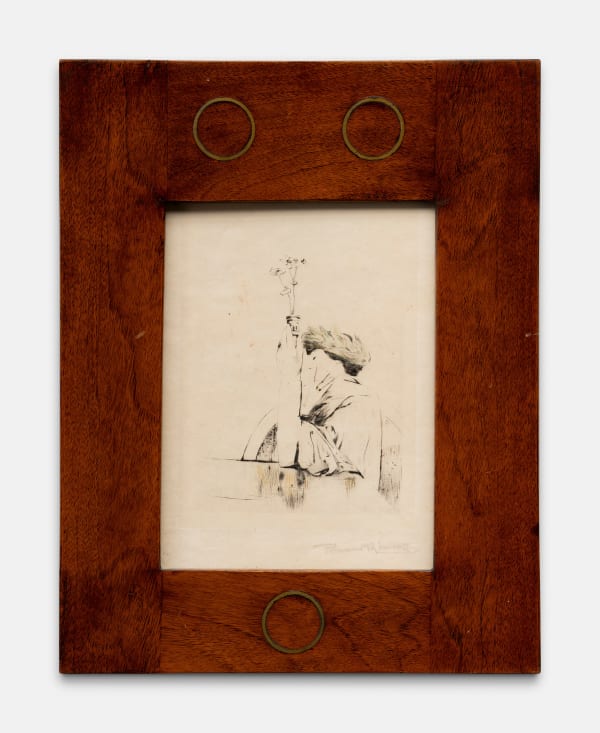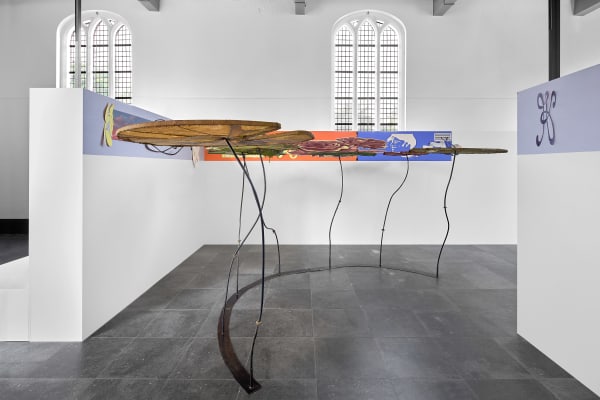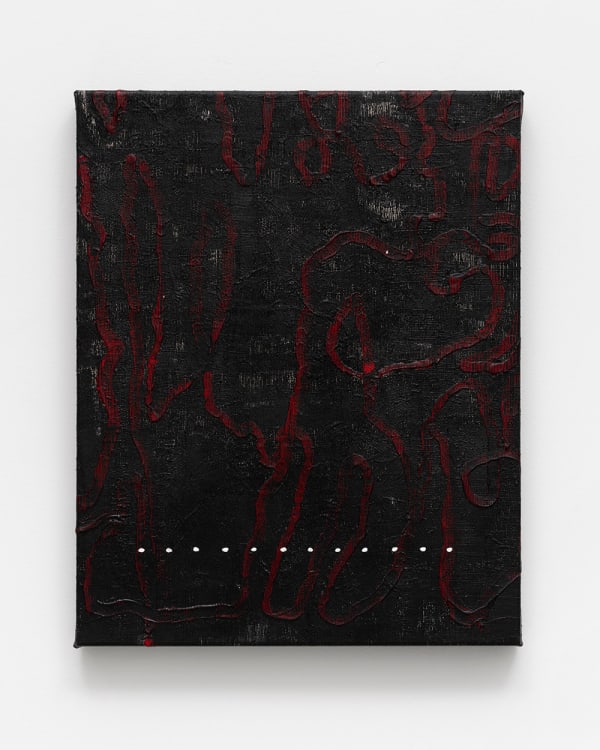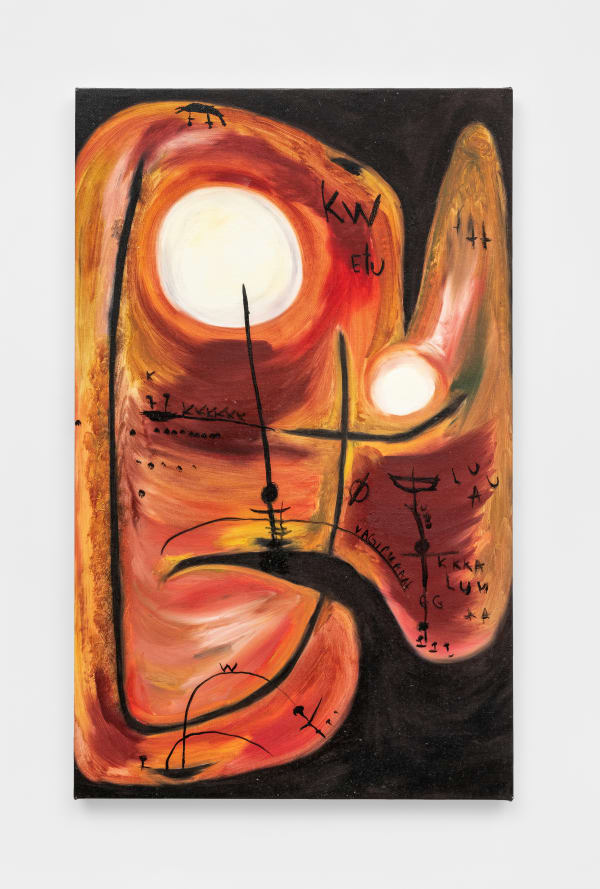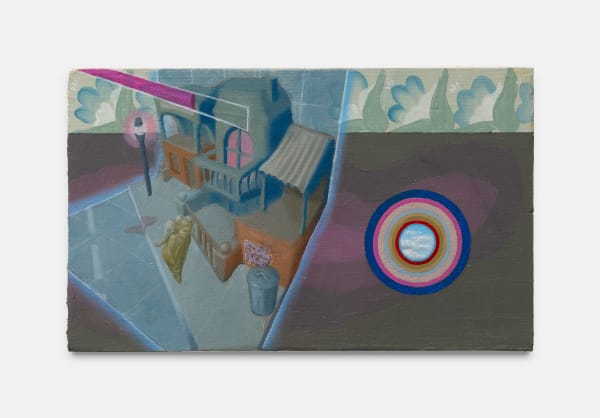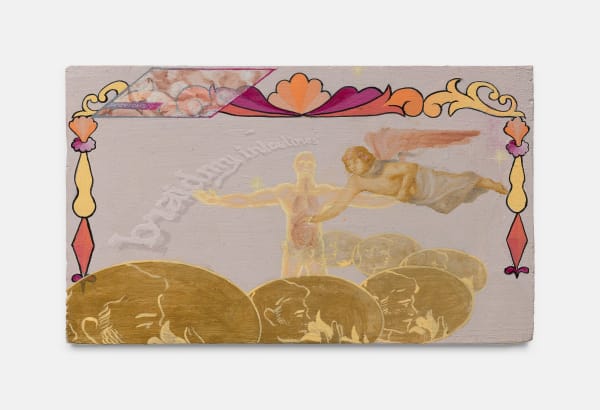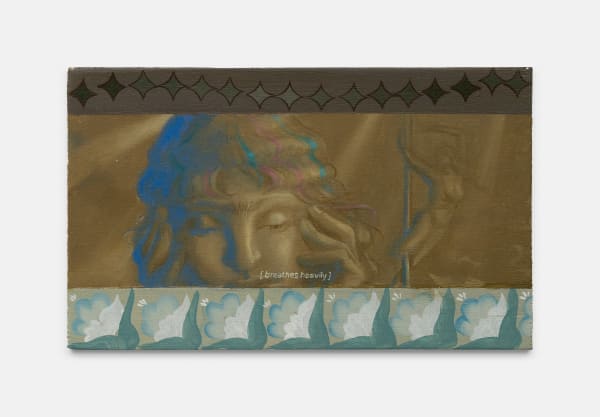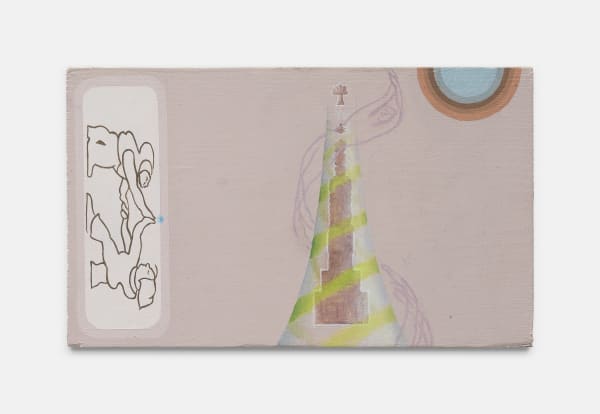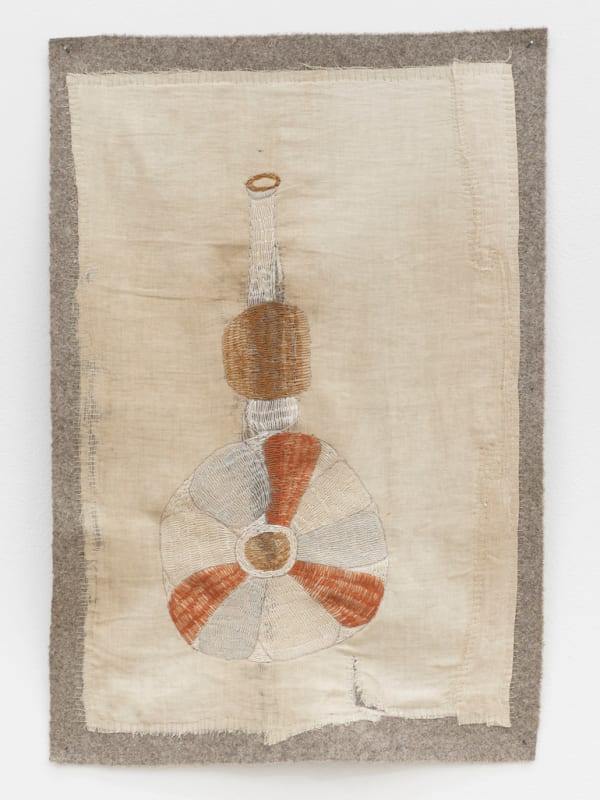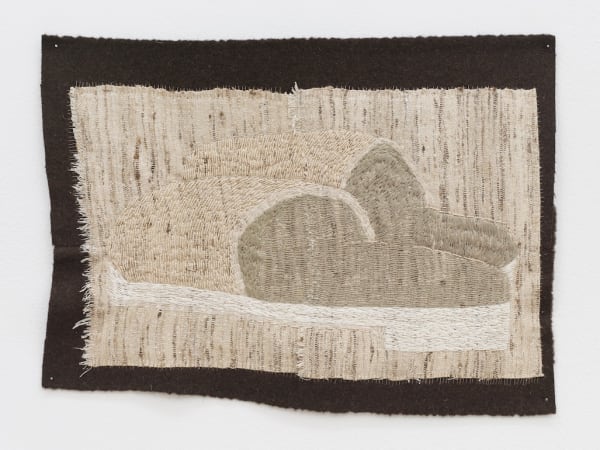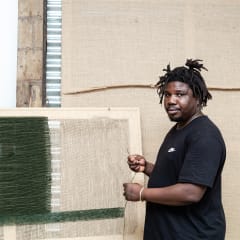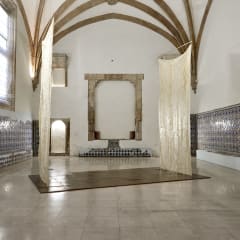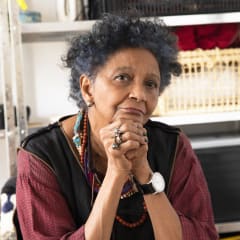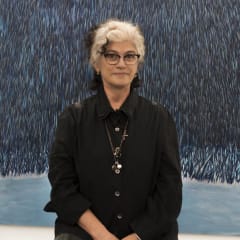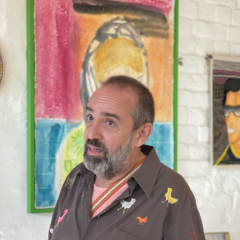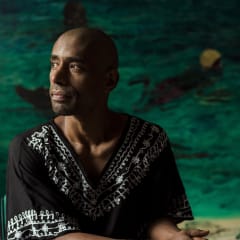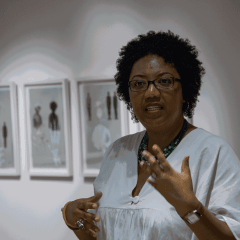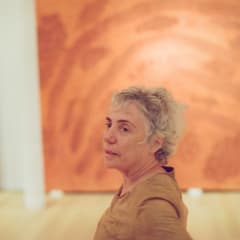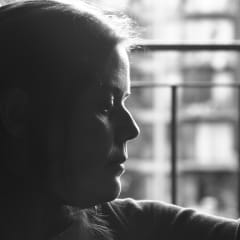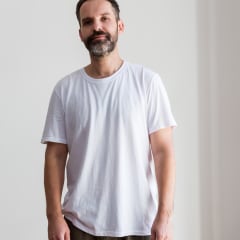Artists Who Wear Jewelry Group exhibition
Open every day | 11 am – 6 pm
d’Ouwe Kerke
Dorpsstraat 16
4525 AH Retranchement
the Netherlands
In 1902, Fernand Khnopff completed construction on a house on the edge of the Bois de la Cambre in Brussels. The belly of the building concealed his studio behind a brass bar that a butler would slide aside for visitors – a gesture described as pernickety and pedantic in its day. A golden circle on the floor housed the artist’s easel. Its position was adjusted in harmony with the stars. Every studio visit began in the rose garden surrounding the house, a rampart of flowers that shielded the careful choreographies of the artist’s dwelling from the bustling, gossipy city outside.
In the interbellum, Brussels lost the house. In the Freudian sixties, Khnopff was considered depraved for repeatedly painting his sister, with whom the artist shared a close and beautiful friendship. Already having fallen out of fashion in the early twentieth century with the rise of modernism, the artist again unfairly fell victim to shifting psycho-cultural codes.
A home can be more than just a dwelling. It can be attached to your back like the shell of a turtle or a pair of hidden beetle wings. It can be a trip from a garden to an inner sanctum. It can console you like the ring of your granny or the locket of your lover after unwholesome strangers have stared at you in public space. It can be the swampy back of your mind when you are required to explain your roots because of your appearance. Home started to exist when Eve showed Adam the sunset in paradise. It is not for a magazine. It’s none of anyone’s business.
Painting a rampart of flowers is a radical gesture. So is howling at the moon. So is looking at the stars and saying no, nee, Nein, non!
This show is adjusted to the stars and artists who craft horizons – who inherited and invent survival kits and survival myths.
Khnopff staged a logic of retreat – rings within rings, intimacy in a jewel box of a home. Here, in the cloistered setting of a desacralized church, each artist, we may appreciate, finds in art itself a kind of home both protected and exposed. Artists Who Wear Jewelry gathers artists who, each in their own way, gracefully defy expectations. Artists who wear subtle jewelry in streets otherwise filled with the murmur of jeering football supporters passing by. Artists who paint ramparts of flowers.
Pieter Chanterie’s new frieze crowns the exhibition with a wig rather than arming it with a defensive wall. Stretched brown roses and camp video-game toupees bloom like whimsical flora, threading through the intimate, mystical, scratched-and-painted portraits of Birde Vanheerswynghels, Antonio Obá, and Jan Cox. Artists who have to be precise about public displays of affection and talk about the weather. This show wears dark sunglasses to see more. Khnopff’s beautiful sister looks at us in different guises – she was, after all, framed in many different ways.
Marlene Smith inherited crochet napkins and doilies, then rolled them into sugar fondant to try and remember what sugar meant in the Caribbean, and to the memory of those who would have felt at home around these heirlooms. Sonia Gomes exclusively works with textiles that were previously worn, always respectfully adopting the social entanglements of their previous owners. Intimate expressions and traces of use through fabrics are also present in the works by Fernando Marques Penteado. His first gesture is often one of restoration or conservation – backing fragile leftovers with heavy-duty, rainproof felt. Jessy Razafimandimby pushes his paintings beyond good old bourgeois taste with cotton baldaquins that feel right at home in the chapel.
Laís Amaral’s precise visual language rolled out of the conversations on race, gender, and social matters she had within the Trovoa collective, a group known for hands-on artistic practices, experimenting with various mediums and discussing their experiences as racialized women in Brazilian society. She scratches and (hair)brushes dark paint on linen. Castiel Vitorino Brasileiro’s elaborate practice proposes or evokes new territories, this time through a painting, sometimes through other psychic-spiritual activities. And Rosana Paulino’s critical research and investigations of social constructs led to the Carapace of Protection series in this exhibition. Her sketches depict female bodies more or less enveloped in a protective cocoon – a chrysalis of a woman – hoping she will not endure the injustices inherited from the past.
Since the 1950s, Suzanne Thienpont has created numerous sand paintings, forging a unique practice. A poetic atmosphere pervades, with colors softened by sand, shells, and pebbles anchoring the surface. Paloma Bosquê and Luiz Roque make their sculptures drip for the very first time and green moss grows out of the green bronze of Solange Pessoa. Thanks to Tom Hallet, it seems like we walk underneath water lilies. He crumpled up the paper for his drawings – just like Hadassa Ngamba did.
Quentin Sietzen rethought the sound the brass bar that used to lock off the Khnopff studio would make, and Leticia Ramos used a pendulum, gravity, and the planet to make her photograms while Patricia Leite depicts light in relation to memory. Leah Ke Yi Zheng allowed the fate of I Ching coins cast on the floor to influence her silk paintings, perhaps echoing Khnopff’s golden circles on his studio pavement.
This show starts with a round mangrove sun from Alvaro Barrington and is concluded with Private Sunset by Sarah Księska.
The artists in this show are generous.
You’re welcome.
Avec plaisir.
– Kasper Bosmans
Laís Amaral, Alvaro Barrington, Paloma Bosquê, Pieter Chanterie, Jan Cox, Sonia Gomes, Tom Hallet, Fernand Khnopff,Sarah Księska, Patricia Leite, Fernando Marques Penteado, Hadassa Ngamba, Antonio Obá, Rosana Paulino, Solange Pessoa, Leticia Ramos, Jessy Razafimandimby, Luiz Roque, Quentin Sietzen, Marlene Smith, Suzanne Thienpont, Birde Vanheerswynghels, Castiel Vitorino Brasileiro, and Leah Ke Yi Zheng.
-
 Luiz Roque, Toilet, 2025
Luiz Roque, Toilet, 2025 -
 Jessy Razafimandimby, If you don't give me what I want, better give it twice, 2024
Jessy Razafimandimby, If you don't give me what I want, better give it twice, 2024 -
 Alvaro Barrington, NHC 2024/Mangrove Sunset (R4), 2024, 2024
Alvaro Barrington, NHC 2024/Mangrove Sunset (R4), 2024, 2024 -
 Solange Pessoa, Untitled/ Sem título, 2016
Solange Pessoa, Untitled/ Sem título, 2016 -
 Rosana Paulino, from Carapace of Protection series, 2004
Rosana Paulino, from Carapace of Protection series, 2004 -
 Suzanne Thienpont, Metamorphose, 1986
Suzanne Thienpont, Metamorphose, 1986 -
 Paloma Bosquê, Weeping Rock, 2025
Paloma Bosquê, Weeping Rock, 2025 -
 Pieter Chanterie, Beauty Sleep Dropout, 2025
Pieter Chanterie, Beauty Sleep Dropout, 2025 -
 Fernand Khnopff, Fantôme, ca 1910
Fernand Khnopff, Fantôme, ca 1910 -
 Birde Vanheerswynghels, Benjamin & Marijn, 2025
Birde Vanheerswynghels, Benjamin & Marijn, 2025 -
![Antonio Obá, Iconografias [Iconographies], 2016](data:image/gif;base64,R0lGODlhAQABAIAAAAAAAP///yH5BAEAAAAALAAAAAABAAEAAAIBRAA7) Antonio Obá, Iconografias [Iconographies], 2016
Antonio Obá, Iconografias [Iconographies], 2016 -
 Jessy Razafimandimby, Biscuits and words, 2025
Jessy Razafimandimby, Biscuits and words, 2025 -
 Fernand Khnopff, Une geste d'offrande, ca 1910
Fernand Khnopff, Une geste d'offrande, ca 1910 -
 Patricia Leite, Untitled (Souvenir), 2010
Patricia Leite, Untitled (Souvenir), 2010 -
 Quentin Sietzen, Ears Have No Eyelids, 2025
Quentin Sietzen, Ears Have No Eyelids, 2025 -
 Tom Hallet, Nymphaea (I–VII), 2023
Tom Hallet, Nymphaea (I–VII), 2023 -
 Tom Hallet, Vessel II (Acquired), 2024
Tom Hallet, Vessel II (Acquired), 2024 -
 Hadassa Ngamba, Irony of the Artist's Jewel, 2024
Hadassa Ngamba, Irony of the Artist's Jewel, 2024 -
 Hadassa Ngamba, Irony of the Artist's Jewel, 2024
Hadassa Ngamba, Irony of the Artist's Jewel, 2024 -
 Laís Amaral, Doze pedras da justiça, 2025
Laís Amaral, Doze pedras da justiça, 2025 -
 Castiel Vitorino Brasileiro, série A grande onda (The great wave series), 2022
Castiel Vitorino Brasileiro, série A grande onda (The great wave series), 2022 -
 Pieter Chanterie, Angels Seduction to Shiny Surface and Shiny Surface’s Seduction to Angel: Strolling Silent Streets, Scavenging for Serenety, 2023
Pieter Chanterie, Angels Seduction to Shiny Surface and Shiny Surface’s Seduction to Angel: Strolling Silent Streets, Scavenging for Serenety, 2023 -
 Pieter Chanterie, Angels Seduction to Shiny Surface and Shiny Surface’s Seduction to Angel: Eternal Tele-novella, 2023
Pieter Chanterie, Angels Seduction to Shiny Surface and Shiny Surface’s Seduction to Angel: Eternal Tele-novella, 2023 -
 Pieter Chanterie, Angels Seduction to Shiny Surface and Shiny Surface’s Seduction to Angel: Ambushed by Mortality, 2023
Pieter Chanterie, Angels Seduction to Shiny Surface and Shiny Surface’s Seduction to Angel: Ambushed by Mortality, 2023 -
 Pieter Chanterie, Angels Seduction to Shiny Surface and Shiny Surface’s Seduction to Angel: Devotion, 2023
Pieter Chanterie, Angels Seduction to Shiny Surface and Shiny Surface’s Seduction to Angel: Devotion, 2023 -
 Pieter Chanterie, Angels Seduction to Shiny Surface and Shiny Surface’s Seduction to Angel: Housewife’s Adequate Apero, 2023
Pieter Chanterie, Angels Seduction to Shiny Surface and Shiny Surface’s Seduction to Angel: Housewife’s Adequate Apero, 2023 -
 Sonia Gomes, Circular I (Série telacorpo), 2022
Sonia Gomes, Circular I (Série telacorpo), 2022 -
 Jessy Razafimandimby, Si seulement les souvenirs parvenaient du futur, 2022
Jessy Razafimandimby, Si seulement les souvenirs parvenaient du futur, 2022 -
 Jan Cox, Brigitte Swarzensky - Horney, 1964
Jan Cox, Brigitte Swarzensky - Horney, 1964 -
 Fernando Marques Penteado, Jewellery, from the Cultures in a Map series, 2021
Fernando Marques Penteado, Jewellery, from the Cultures in a Map series, 2021 -
 Fernando Marques Penteado, Berniz Rug, from the Cultures in a Map series, 2021
Fernando Marques Penteado, Berniz Rug, from the Cultures in a Map series, 2021 -
 Fernando Marques Penteado, Mule, from the Cultures in a Map series, 2021
Fernando Marques Penteado, Mule, from the Cultures in a Map series, 2021 -
 Hadassa Ngamba, Fungi and Stamps: Entangled Identities, 2024
Hadassa Ngamba, Fungi and Stamps: Entangled Identities, 2024 -
 Leah Ke Yi Zheng, No.34/Machine, 2025
Leah Ke Yi Zheng, No.34/Machine, 2025 -
 Leticia Ramos, whitenoise, 2024
Leticia Ramos, whitenoise, 2024 -
 Sarah Księska, Private sunset, 2020
Sarah Księska, Private sunset, 2020



